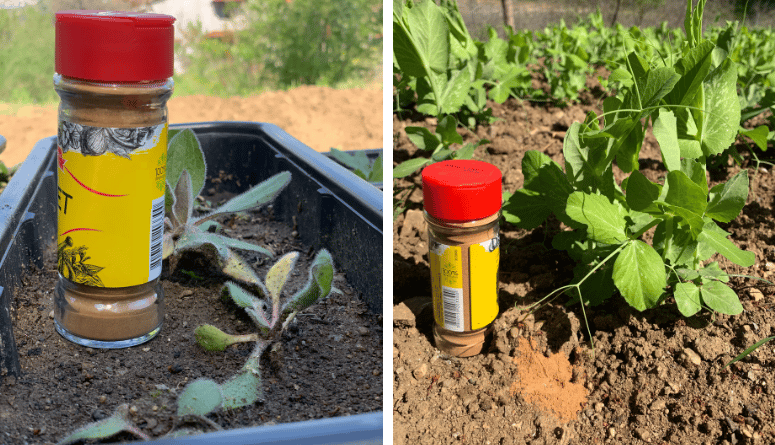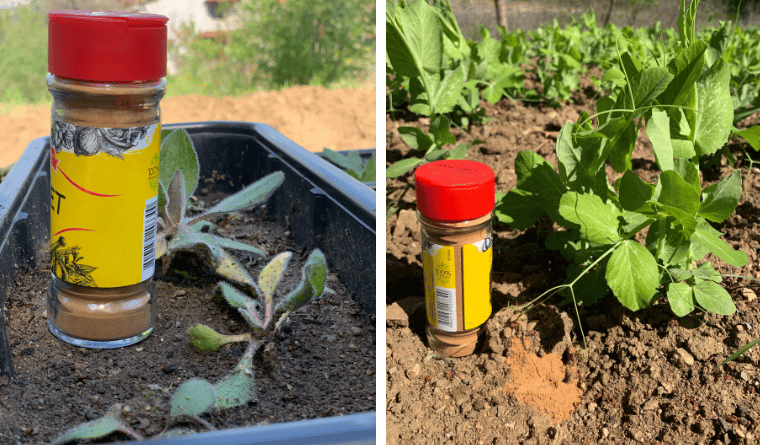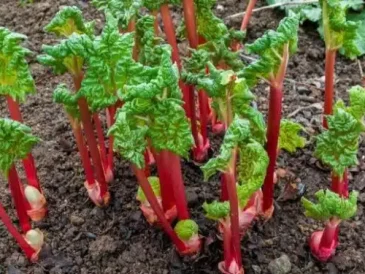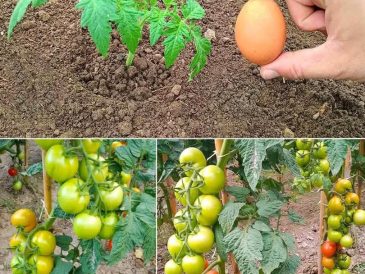Modern gardeners are increasingly turning away from synthetic fertilizers and harsh chemical pesticides in favor of natural, sustainable solutions.
Surprisingly, one of the most effective tools in this eco-friendly arsenal is probably already sitting in your kitchen spice rack: cinnamon.
While most people associate cinnamon with cozy baked goods, its benefits extend far beyond the kitchen.
This humble spice is packed with compounds that support plant health, deter pests, and solve common gardening problems – all without toxic chemicals or harm to beneficial insects.
Why Cinnamon Works So Well for Plants
Cinnamon is derived from the inner bark of trees in the genus Cinnamomum.
The key to its effectiveness lies in a powerful compound called cinnamaldehyde, which possesses strong antimicrobial, antifungal, and insect-repelling properties.
Additionally, cinnamon contains natural essential oils, tannins, and antioxidants that contribute to overall plant health.
Unlike many synthetic products, cinnamon is:
- Biodegradable
- Non-toxic to soil life and beneficial insects
- Safe for use around children and pets
- Affordable and readily available
It’s an ideal solution for gardeners who want to keep their plants thriving while minimizing harm to the environment.
Let’s dig deeper into the 6 most compelling ways cinnamon can help your garden flourish.

6 Reasons Why Plants Love Cinnamon
by Linda Parker
February 20, 2020 – Updated on July 11, 2025

Modern gardeners are increasingly turning away from synthetic fertilizers and harsh chemical pesticides in favor of natural, sustainable solutions.
Surprisingly, one of the most effective tools in this eco-friendly arsenal is probably already sitting in your kitchen spice rack: cinnamon.
While most people associate cinnamon with cozy baked goods, its benefits extend far beyond the kitchen.
This humble spice is packed with compounds that support plant health, deter pests, and solve common gardening problems – all without toxic chemicals or harm to beneficial insects.
Why Cinnamon Works So Well for Plants
Cinnamon is derived from the inner bark of trees in the genus Cinnamomum.
The key to its effectiveness lies in a powerful compound called cinnamaldehyde, which possesses strong antimicrobial, antifungal, and insect-repelling properties.
Additionally, cinnamon contains natural essential oils, tannins, and antioxidants that contribute to overall plant health.
Unlike many synthetic products, cinnamon is:
- Biodegradable
- Non-toxic to soil life and beneficial insects
- Safe for use around children and pets
- Affordable and readily available
It’s an ideal solution for gardeners who want to keep their plants thriving while minimizing harm to the environment.
Let’s dig deeper into the 6 most compelling ways cinnamon can help your garden flourish.
1. Cinnamon Helps Prevent and Treat Fungal Infections
One of the most common struggles for gardeners – especially those growing seedlings – is fungal disease.
Fungal pathogens like Pythium, Fusarium, and Rhizoctonia thrive in damp, warm conditions, leading to devastating problems like:
- Damping-off disease in seedlings
- Root rot in established plants
- Mold growth on soil surfaces
- Leaf spot diseases and blight
- Powdery mildew on foliage
Here’s where cinnamon shines. Its natural antifungal properties, primarily due to cinnamaldehyde, help inhibit fungal growth and keep infections at bay.
How to Use Cinnamon for Fungal Issues:
- Seed Starting: Dust cinnamon lightly over seed-starting trays to help prevent damping-off disease. It acts as a protective barrier against fungal spores that cause seedling collapse.
- Soil Mold: Sprinkle cinnamon over the surface of potted plants or seed trays to suppress mold growth, especially in humid environments.
- Leaf Fungus: For plants showing signs of leaf spot or mildew, gently dust cinnamon over affected leaves, or mix a cinnamon-water spray for more even application.
This simple, non-toxic solution can save countless young plants and prevent larger outbreaks in your garden beds.
2. Cinnamon Encourages Rooting in Plant Cuttings
If you love propagating plants from cuttings, cinnamon can help you skip expensive synthetic rooting powders.
It’s a natural rooting stimulant that encourages new root growth while guarding against infection.
When propagating houseplants like pothos, coleus, rosemary, basil, and even woody shrubs, cinnamon serves two crucial purposes:
- Stimulates root cell development
- Prevents cuttings from rotting due to fungal or bacterial pathogens
How to Use Cinnamon for Propagation:
- Moisten the cut end of your plant cutting.
- Dip the damp end into a small dish of cinnamon powder.
- Tap off any excess and plant your cutting into soil, water, or another propagation medium.
- Maintain warm, humid conditions to encourage rooting.
You’ll be amazed at how effective cinnamon can be for helping your cuttings thrive – and it costs just pennies compared to commercial rooting gels.
3. Cinnamon Is a Natural Pest Repellent
One of cinnamon’s most valuable properties in the garden is its ability to deter a range of common pests without harming pollinators like bees or beneficial insects such as ladybugs.
Cinnamon’s strong aroma and spicy compounds disrupt the sensory systems and feeding behavior of many insects, including:
- Ants – cinnamon disrupts scent trails and deters colonies from establishing near your plants.
- Fungus gnats – particularly troublesome for houseplants and greenhouse growers.
- Mosquitoes – dislike the scent and will avoid areas treated with cinnamon.
- Aphids and spider mites – can be deterred when cinnamon is dusted on leaves.
How to Use Cinnamon for Pest Control:
- Barrier Method: Sprinkle a line of cinnamon around the base of plants or along garden bed edges to repel ants and crawling insects.
- Soil Protection: Dust the surface of potting soil to deter fungus gnats from laying eggs.
- Spray Solution: Mix 1 teaspoon of cinnamon into 1 cup of warm water. Steep for several hours, strain, and spray onto leaves where pests congregate.
Unlike harsh chemical sprays, cinnamon won’t damage plants or create harmful residues, making it ideal for edible crops and indoor greenery.
4. Cinnamon Helps Heal Plant Wounds
When you prune plants or accidentally break stems, the exposed tissue can be vulnerable to pathogens.
Cinnamon acts as a natural antiseptic, sealing wounds and protecting them from fungal and bacterial infections.
This makes it particularly valuable for:
- Pruned branches on shrubs, roses, and fruit trees
- Damaged succulent leaves or stems
- Areas where pests have chewed or bored into plants
How to Use Cinnamon for Healing:
- Immediately after pruning, dust cinnamon onto the cut surface.
- For damaged areas, gently press cinnamon into any splits or open tissue.
- Repeat the application every few days if needed, especially in humid conditions.
This simple trick can significantly reduce the risk of disease entering wounds and helps plants recover faster.

6 Reasons Why Plants Love Cinnamon
by Linda Parker
February 20, 2020 – Updated on July 11, 2025

Modern gardeners are increasingly turning away from synthetic fertilizers and harsh chemical pesticides in favor of natural, sustainable solutions.
Surprisingly, one of the most effective tools in this eco-friendly arsenal is probably already sitting in your kitchen spice rack: cinnamon.
While most people associate cinnamon with cozy baked goods, its benefits extend far beyond the kitchen.
This humble spice is packed with compounds that support plant health, deter pests, and solve common gardening problems – all without toxic chemicals or harm to beneficial insects.
Why Cinnamon Works So Well for Plants
Cinnamon is derived from the inner bark of trees in the genus Cinnamomum.
The key to its effectiveness lies in a powerful compound called cinnamaldehyde, which possesses strong antimicrobial, antifungal, and insect-repelling properties.
Additionally, cinnamon contains natural essential oils, tannins, and antioxidants that contribute to overall plant health.
Unlike many synthetic products, cinnamon is:
- Biodegradable
- Non-toxic to soil life and beneficial insects
- Safe for use around children and pets
- Affordable and readily available
It’s an ideal solution for gardeners who want to keep their plants thriving while minimizing harm to the environment.
Let’s dig deeper into the 6 most compelling ways cinnamon can help your garden flourish.
1. Cinnamon Helps Prevent and Treat Fungal Infections
One of the most common struggles for gardeners – especially those growing seedlings – is fungal disease.
Fungal pathogens like Pythium, Fusarium, and Rhizoctonia thrive in damp, warm conditions, leading to devastating problems like:
- Damping-off disease in seedlings
- Root rot in established plants
- Mold growth on soil surfaces
- Leaf spot diseases and blight
- Powdery mildew on foliage
Here’s where cinnamon shines. Its natural antifungal properties, primarily due to cinnamaldehyde, help inhibit fungal growth and keep infections at bay.
How to Use Cinnamon for Fungal Issues:
- Seed Starting: Dust cinnamon lightly over seed-starting trays to help prevent damping-off disease. It acts as a protective barrier against fungal spores that cause seedling collapse.
- Soil Mold: Sprinkle cinnamon over the surface of potted plants or seed trays to suppress mold growth, especially in humid environments.
- Leaf Fungus: For plants showing signs of leaf spot or mildew, gently dust cinnamon over affected leaves, or mix a cinnamon-water spray for more even application.
This simple, non-toxic solution can save countless young plants and prevent larger outbreaks in your garden beds.
2. Cinnamon Encourages Rooting in Plant Cuttings
If you love propagating plants from cuttings, cinnamon can help you skip expensive synthetic rooting powders.
It’s a natural rooting stimulant that encourages new root growth while guarding against infection.
When propagating houseplants like pothos, coleus, rosemary, basil, and even woody shrubs, cinnamon serves two crucial purposes:
- Stimulates root cell development
- Prevents cuttings from rotting due to fungal or bacterial pathogens
How to Use Cinnamon for Propagation:
- Moisten the cut end of your plant cutting.
- Dip the damp end into a small dish of cinnamon powder.
- Tap off any excess and plant your cutting into soil, water, or another propagation medium.
- Maintain warm, humid conditions to encourage rooting.
You’ll be amazed at how effective cinnamon can be for helping your cuttings thrive – and it costs just pennies compared to commercial rooting gels.
3. Cinnamon Is a Natural Pest Repellent
One of cinnamon’s most valuable properties in the garden is its ability to deter a range of common pests without harming pollinators like bees or beneficial insects such as ladybugs.
Cinnamon’s strong aroma and spicy compounds disrupt the sensory systems and feeding behavior of many insects, including:
- Ants – cinnamon disrupts scent trails and deters colonies from establishing near your plants.
- Fungus gnats – particularly troublesome for houseplants and greenhouse growers.
- Mosquitoes – dislike the scent and will avoid areas treated with cinnamon.
- Aphids and spider mites – can be deterred when cinnamon is dusted on leaves.
How to Use Cinnamon for Pest Control:
- Barrier Method: Sprinkle a line of cinnamon around the base of plants or along garden bed edges to repel ants and crawling insects.
- Soil Protection: Dust the surface of potting soil to deter fungus gnats from laying eggs.
- Spray Solution: Mix 1 teaspoon of cinnamon into 1 cup of warm water. Steep for several hours, strain, and spray onto leaves where pests congregate.
Unlike harsh chemical sprays, cinnamon won’t damage plants or create harmful residues, making it ideal for edible crops and indoor greenery.
4. Cinnamon Helps Heal Plant Wounds
When you prune plants or accidentally break stems, the exposed tissue can be vulnerable to pathogens.
Cinnamon acts as a natural antiseptic, sealing wounds and protecting them from fungal and bacterial infections.
This makes it particularly valuable for:
- Pruned branches on shrubs, roses, and fruit trees
- Damaged succulent leaves or stems
- Areas where pests have chewed or bored into plants
How to Use Cinnamon for Healing:
- Immediately after pruning, dust cinnamon onto the cut surface.
- For damaged areas, gently press cinnamon into any splits or open tissue.
- Repeat the application every few days if needed, especially in humid conditions.
This simple trick can significantly reduce the risk of disease entering wounds and helps plants recover faster.
5. Cinnamon Enhances Seed Germination and Soil Health
Healthy soil is the foundation of every garden. Cinnamon’s antimicrobial properties help keep soil free of harmful pathogens during the vulnerable stages of seed germination and seedling development.
Here’s why cinnamon is particularly beneficial for seedlings:
- Suppresses harmful soil fungi that cause damping-off
- Reduces mold growth on moist seed-starting soil
- Helps seedlings establish without chemical treatments
How to Use Cinnamon in Seed Starting:
- Mix ½ teaspoon of cinnamon into each quart of potting mix before sowing seeds.
- Lightly dust the surface of seed trays after watering to prevent mold.
- For transplanted seedlings, sprinkle cinnamon around the base of each plant to ward off soil pathogens.
This natural approach gives your young plants the best possible start while maintaining a healthy soil ecosystem.
6. Cinnamon Keeps Houseplants Healthy and Fresh
Indoor gardening comes with unique challenges: high humidity, limited airflow, and pest infestations can wreak havoc on houseplants.
Cinnamon offers an eco-friendly way to keep your indoor jungle thriving.
Cinnamon is ideal for:
- Stopping fungus gnat infestations in potted plants.
- Preventing mold growth on soil surfaces.
- Acting as a mild antimicrobial spray for leaves.
- Helping heal soft spots or rot in succulents and orchids.
How to Use Cinnamon Indoors:
- Soil Topping: Sprinkle a light layer of cinnamon on potting soil to deter fungus gnats and mold.
- Cinnamon Spray: Steep cinnamon in warm water, strain, and lightly mist leaves to repel insects and reduce fungal spores.
- Wound Care: Dust cinnamon on any damaged or rotting areas of plants like aloe, kalanchoe, or orchids.
Since cinnamon is edible and non-toxic, it’s perfectly safe to use around kitchen herbs and plants grown near food preparation areas.
How Often Should You Use Cinnamon?
Although cinnamon is natural, it’s still important to use it in moderation. Overuse can dry out soil or inhibit beneficial soil microbes.
- For pests or mold control: apply every 2–3 weeks as needed.
- For rooting cuttings: use only once at the time of propagation.
- For wound treatment: apply immediately after damage and reapply if needed.
- For seed starting: use during initial soil preparation.
Frequently Asked Questions
Will cinnamon harm my plants?
Not when used lightly. Cinnamon is safe for most plants but avoid dumping large quantities into soil, as excessive use could disrupt beneficial microbes.
Can cinnamon replace all my fungicides?
While cinnamon is effective for minor fungal issues, severe infections may still require other organic treatments. Think of cinnamon as a preventative and mild cure.
Can I combine cinnamon with other natural remedies?
Yes! Cinnamon works well alongside neem oil, diluted hydrogen peroxide, or compost teas in integrated pest and disease management.
Cinnamon isn’t just a cozy kitchen spice – it’s a powerful, versatile ally for natural gardening.
From rooting new plants to fending off pests and protecting delicate seedlings, cinnamon helps you grow a healthier, more resilient garden without harsh chemicals.



